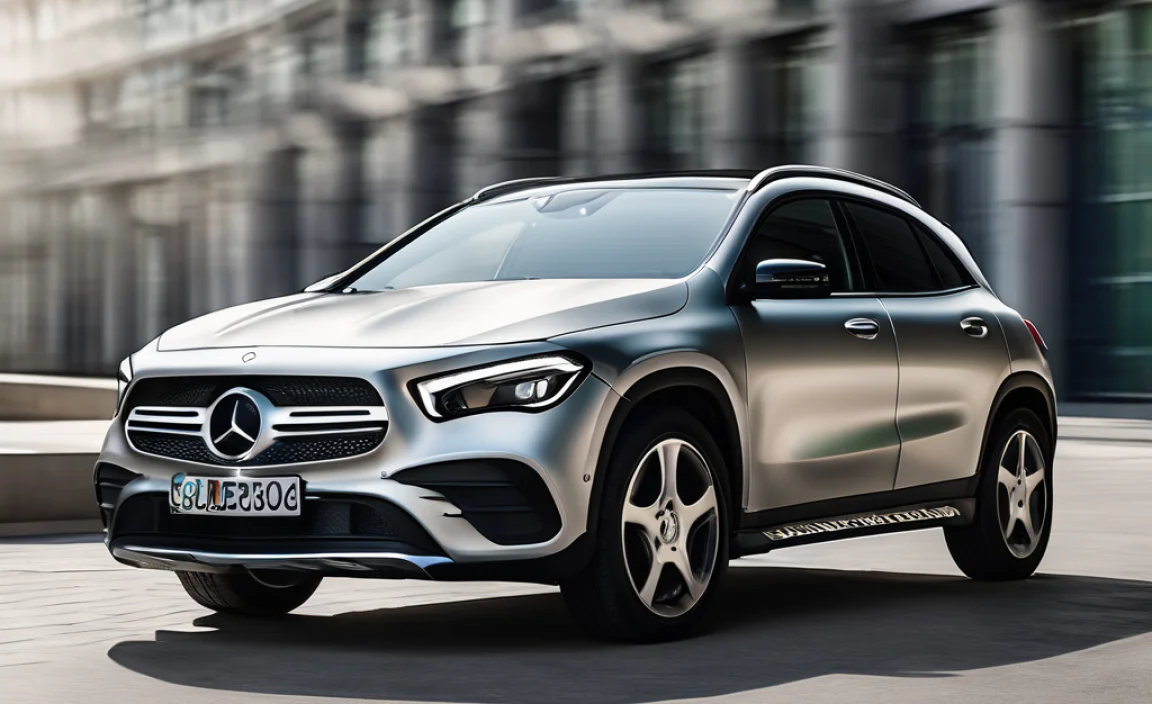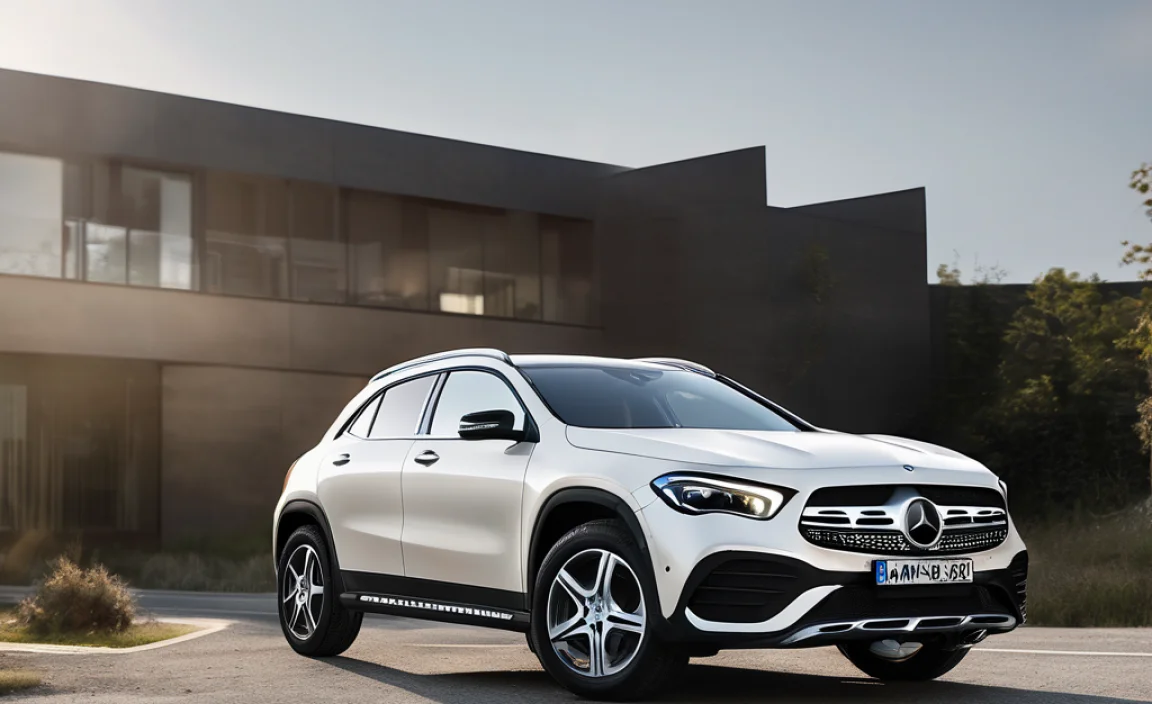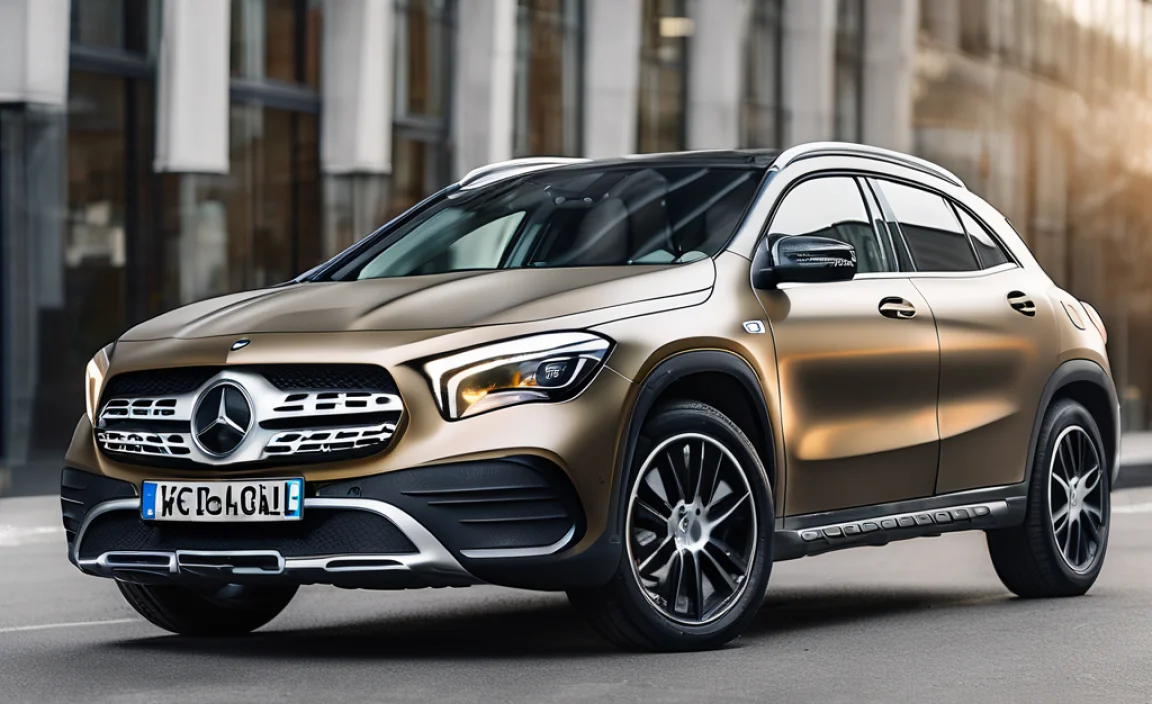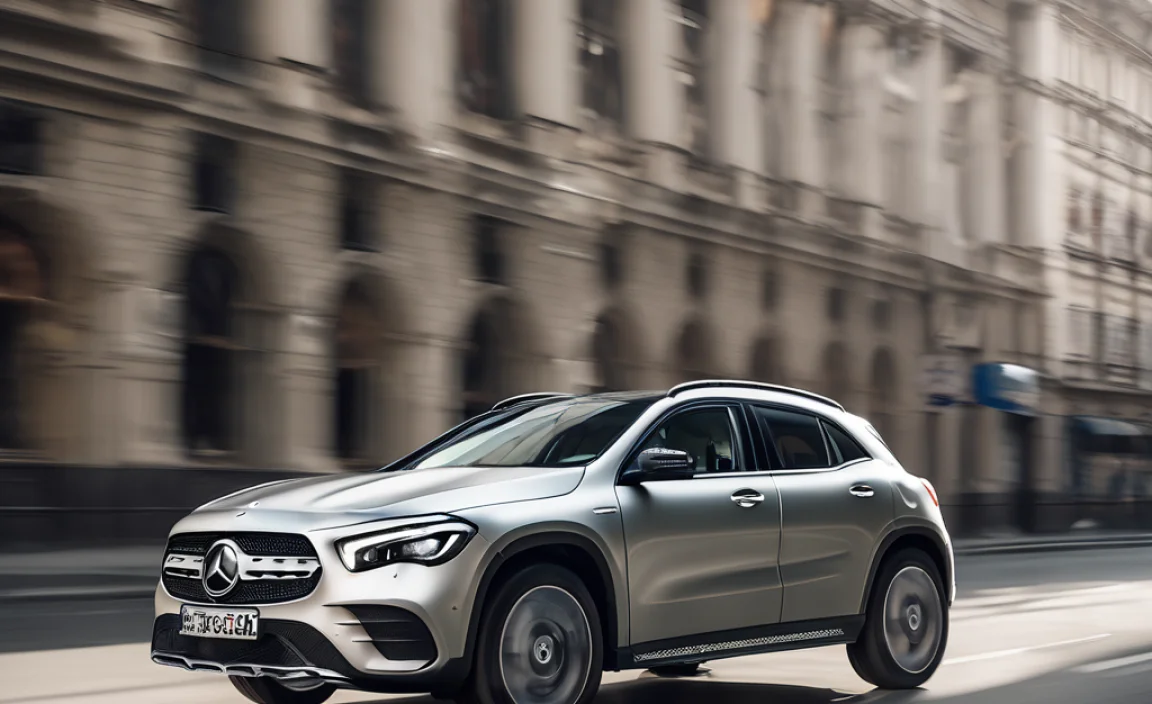The Mercedes GLA-Class hybrid model offers a smart blend of luxury and efficiency. This guide breaks down everything you need to know, from understanding its technology to simple maintenance tips, making it easy for any owner to get the most out of their plug-in hybrid experience.
Thinking about a hybrid Mercedes-Benz GLA? You’re not alone! Many owners are curious about how these advanced vehicles work and how to care for them. It’s easy to feel a bit overwhelmed by the new technology, but don’t worry. We’re here to make it simple. This guide will walk you through the essential aspects of owning a Mercedes GLA-Class hybrid model, covering everything from its powertrain to everyday practicalities. Getting to know your hybrid GLA is the first step to enjoying its full benefits and keeping it running smoothly for years to come.
Understanding the Mercedes GLA-Class Hybrid Model

The Mercedes-Benz GLA is a compact luxury SUV that many drivers love for its stylish design and comfortable ride. When you add a hybrid powertrain to the mix, you get an even more appealing package. A hybrid car combines a traditional gasoline engine with an electric motor and a battery. This combination allows the car to use electric power for shorter trips or at lower speeds, and then switch to the gasoline engine, or use both together, for more power when needed. For the GLA-Class, this means you get impressive fuel economy without sacrificing the premium feel and performance Mercedes-Benz is known for.
How the Hybrid Powertrain Works
At its heart, the GLA-Class hybrid model uses a sophisticated system to manage its power sources. It’s designed to be seamless and intuitive, so you don’t have to actively think about how it’s working. Here’s a simple breakdown:
- Electric Motor & Battery: The electric motor draws power from a high-voltage battery pack. This battery can be charged by plugging the car into an electrical outlet or a charging station, or it can be recharged while driving through regenerative braking.
- Gasoline Engine: A fuel-efficient gasoline engine works alongside the electric motor.
- Intelligent Management: The car’s computer constantly optimizes which power source to use. It might use electric power only when you’re starting from a stop, merging into traffic, or cruising at lower speeds.
- Hybrid Mode: When you need more acceleration or are driving at higher speeds, the gasoline engine, or a combination of both the engine and electric motor, will provide the power.
- Driving Modes: You can often select different driving modes (like Electric, Hybrid, or Sport) to influence how the car prioritizes electric or gasoline power. This allows you to tailor the driving experience to your needs, whether it’s maximum efficiency or spirited performance.
The goal of this system is to minimize fuel consumption and emissions while maximizing performance and driving enjoyment. It’s a smart way to get the best of both worlds.
Key Hybrid Technology Features
Mercedes-Benz has packed its GLA-Class hybrid models with advanced technology. Understanding these features will help you use your car more effectively:
- Plug-in Capability: This means you can plug your car into a power source to charge the battery. For daily commutes or shorter distances, you can often rely solely on electric power, saving on fuel costs. Learn more about electric vehicle charging standards at fueleconomy.gov.
- Regenerative Braking: When you take your foot off the accelerator or apply the brakes, the electric motor works in reverse to slow the car down. This process captures kinetic energy that would normally be lost as heat and converts it back into electricity to recharge the battery. This is a fundamental aspect of hybrid efficiency.
- Electric-Only Range: The GLA-Class hybrid models have a specific range they can travel purely on electric power. This is ideal for city driving, school runs, or your daily commute if it falls within that range.
- Navigation System Integration: The navigation often works with the hybrid system. For example, it might suggest routes that optimize battery usage or alert you when you’re entering an area where electric driving is most beneficial.
- Driver Displays: Your instrument cluster and infotainment screen will show you real-time information about battery charge, electric motor usage, fuel consumption, and your overall efficiency.
Charging Your Mercedes GLA-Class Hybrid Model

Charging your plug-in hybrid GLA is straightforward and offers significant advantages. It’s the key to unlocking the full fuel-saving potential of this vehicle. Here’s what you need to know:
Home Charging
The most convenient way to charge your GLA hybrid is at home. You have a couple of options:
- Standard Household Outlet (Level 1 Charging): You can use the charging cable that comes with your car to plug into a regular 120V wall outlet. This is the slowest method but is perfectly fine for overnight charging if you don’t drive very long distances. It typically takes many hours to fully charge the battery this way.
- Dedicated Home Charger (Level 2 Charging): For faster charging, you can have a Level 2 charging station installed at your home. This uses a 240V connection, similar to what an electric dryer uses. A Level 2 charger can significantly reduce charging times to just a few hours, making it ideal for getting a full charge overnight or even during a workday if you’re home. Consult with a qualified electrician for installation. The Department of Energy provides useful information on home charging options at fueleconomy.gov.
Public Charging
You’ll also find charging stations in public places like shopping centers, parking garages, and workplaces. These are typically Level 2 chargers, offering a convenient way to top up your battery while you’re out and about. Some public stations might even be DC fast chargers (Level 3), though these are less common for plug-in hybrids and might be more optimized for battery-electric vehicles.
Charging Best Practices
- Charge Regularly: To maximize the benefits of your hybrid, try to charge it whenever it’s convenient, especially overnight at home.
- Understand Charging Times: Different charging levels and battery capacities will affect how long it takes to charge. Your car’s display or app will show you the estimated charging time.
- Use Mercedes me App: The Mercedes me app can help you monitor charging status, schedule charging times (to take advantage of off-peak electricity rates), and locate public charging stations.
Essential Maintenance for Your GLA Hybrid

Maintaining a hybrid vehicle might sound complicated, but it shares many similarities with a conventional car, with a few hybrid-specific considerations. Regular maintenance is key to ensuring your GLA’s longevity and optimal performance.
What’s Different?
The biggest difference is the absence of some components found in traditional cars and the addition of others:
- No Oil Changes for Some Systems: The electric motor and battery don’t require oil changes. However, the gasoline engine still needs its regular oil and filter changes.
- Brake Wear: Due to regenerative braking, your conventional brake pads and rotors may last longer because they are used less frequently. However, they still need periodic inspection to ensure they are functioning correctly and are not seized or corroded.
- Battery Health: The high-voltage battery is designed to last the life of the vehicle. Mercedes-Benz typically provides a substantial warranty for these batteries. Regular driving and charging cycles are generally good for battery health.
- Electric Motor and Power Electronics: These components are generally maintenance-free and sealed.
Scheduled Maintenance Items
Your GLA-Class hybrid will still require standard maintenance. Always refer to your owner’s manual for the most precise schedule, but here are common items:
| Maintenance Item | Typical Interval | Notes |
|---|---|---|
| Engine Oil & Filter Change | Every 10,000-15,000 miles or annually | For the gasoline engine. |
| Tire Rotation | Every 5,000-7,500 miles | Essential for even wear, especially with hybrid weight distribution. |
| Cabin Air Filter Replacement | Every 15,000-25,000 miles or annually | Improves interior air quality. |
| Engine Air Filter Replacement | Every 20,000-30,000 miles | Ensures optimal engine performance. |
| Brake Fluid Flush | Every 2 years, regardless of mileage | Crucial for hydraulic system integrity. |
| Coolant Check/Flush | Per manufacturer recommendations (e.g., every 30,000-60,000 miles) | Different coolant might be used for the hybrid system components. |
| High-Voltage Battery Inspection | As recommended by Mercedes-Benz, often part of major service intervals | Usually a software check and visual inspection. |
DIY Checks You Can Do
You don’t need to be a master mechanic to perform a few simple checks:
- Tire Pressure: Use a reliable tire pressure gauge and check your tires when they are cold. This is crucial for fuel efficiency and safety. Find the correct pressure on the sticker in your driver’s side doorjamb.
- Fluid Levels: Check the windshield washer fluid and coolant levels. For coolant, ensure it’s within the recommended range on the reservoir.
- Lights: Walk around your car and check that all your headlights, taillights, brake lights, and turn signals are working correctly.
- Wiper Blades: Ensure your wiper blades are clear and not leaving streaks. Replace them if they chatter or smear.
For any complex checks or repairs, or if you notice any unusual sounds or warning lights, it’s always best to consult a qualified Mercedes-Benz technician.
Troubleshooting Common Issues & Tips

Even the most reliable vehicles can encounter occasional quirks. Here are some common issues and beginner-friendly tips for your GLA-Class hybrid model:
Battery Not Charging
Possible Causes: Faulty charging cable, tripped circuit breaker at home, issue with the charging port or the onboard charger.
What to Try:
- Ensure the charging cable is securely plugged into both the car and the power source.
- Try a different outlet or charging station to rule out a problem with the power source.
- Check your home’s circuit breaker if you’re using a wall outlet.
- Inspect the charging port for any debris or damage.
- If using a dedicated home charger, check its status indicator lights and consult its manual.
- If the issue persists, it’s time to contact a service center.
Reduced Electric-Only Range
Possible Causes: Cold weather (batteries perform less efficiently in the cold), aggressive driving style, heavy use of climate control (heater or AC), battery nearing the end of its charge cycle.
What to Do:
- Warm Up: In cold weather, allow the car to warm up a bit before driving, or pre-condition the cabin while it’s still plugged in. The heater draws significant power.
- Drive Gently: Smooth acceleration and braking conserve battery power.
- Use Climate Control Wisely: Consider using seat heaters or steering wheel heaters before blasting the main cabin heater, as they use less energy.
- Check Tire Pressure: Underinflated tires increase rolling resistance and reduce range.
- Software Updates: Sometimes, software updates can optimize battery management.
“Check Engine” or Hybrid System Warning Lights
What to Do:
- Don’t Panic: These lights can indicate anything from a minor issue to something serious.
- Consult Your Owner’s Manual: It will often provide specific information about what the light means.
- Check for Obvious Issues: Is the gas cap loose? Sometimes this can trigger an engine light.
- Scan the Codes (If You Have Tools): If you have an OBD-II scanner, you can retrieve the diagnostic trouble codes (DTCs) to get more information. You can find affordable OBD-II scanners online, for example, explore options from brands like Autel or Launch.
- Schedule Service: It’s best to have a qualified technician diagnose and fix the issue promptly. Hybrid systems are complex, and improper repairs can be costly.
Noisy Operation
Possible Causes: While hybrid systems are generally quiet, you might hear different sounds during operation. A humming or whirring sound is often normal for the electric motor. However, unusual grinding, clunking, or excessive engine noise could indicate a problem.
What to Do:
- Identify When It Happens: Does it occur during acceleration, braking, at idle, or when switching between power sources?
- Try Different Driving Modes: Does the noise change depending on the mode (Electric, Hybrid, Sport)?
- Seek Professional Diagnosis: Strange noises are a clear sign to have your vehicle inspected by a Mercedes-Benz specialist.
FAQs About the Mercedes GLA-Class Hybrid Model
Q: How much electric-only range can I expect from a GLA-Class hybrid?
A: The electric-only range can vary slightly depending on the specific model year and battery condition, but typically, you can expect around 30-40 miles of pure electric driving on a full charge, which is excellent for most daily commutes.
Q: Do I need special insurance for a hybrid car?
A: Generally, your standard auto insurance policy will cover a hybrid vehicle. However, it’s always a good idea to inform your insurance provider about the type of vehicle you’re driving, as premiums can sometimes be adjusted based on vehicle technology and repair costs.
Q: Are hybrid cars more expensive to repair?
A: While some components like the high-voltage battery can be expensive to replace outside of warranty, routine maintenance is often comparable to a gasoline-only car. Thanks to regenerative braking, brake component wear is often reduced. The complexity of the hybrid system means specialized knowledge is needed for major repairs.
Q: How long do hybrid batteries last?
A: Hybrid batteries are designed to last for many years and hundreds of thousands of miles. Mercedes-Benz typically offers a long warranty on these batteries (often 8 years or 100,000 miles, whichever comes first), providing peace of mind.
Q: Can I drive my GLA hybrid in heavy rain or snow?
A: Yes, all hybrid components, including the high-voltage battery and electric motor, are sealed and designed to operate safely in various weather conditions, including rain and snow. The vehicle’s traction control and all-wheel-drive systems (if equipped) will provide stability.
Q: What is the difference between a hybrid and a plug-in hybrid (PHEV)?
A: A standard hybrid (like a Toyota Prius) charges its battery only through regenerative braking and the gasoline engine. A plug-in hybrid (PHEV) like the GLA hybrid has a larger battery and can also be efficiently charged by plugging into an external power source, allowing for a significant electric-only driving range.
Conclusion
The Mercedes-Benz GLA-Class hybrid model is a fantastic choice for those seeking a luxurious, efficient, and technologically advanced compact SUV. By understanding its unique hybrid powertrain, how to charge it effectively, and the straightforward maintenance required, you’re well-equipped to enjoy everything your GLA has to offer. Remember to leverage the electric-only capabilities for your daily drives to save on fuel and reduce emissions, and don’t hesitate to consult your owner’s manual or a trusted Mercedes-Benz service center for any questions or concerns. With a little attention and care, your GLA hybrid will provide you with many miles of smooth, efficient, and premium driving.